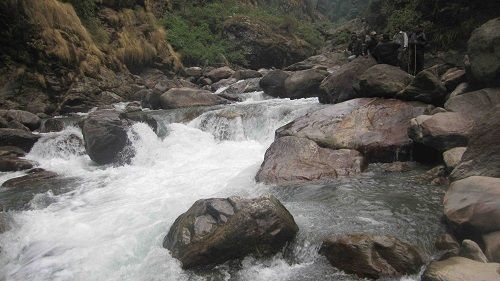From Guest Blogger Philip: Green Printing Reduces Environmental Impact

This is an issue that causes broad concern about the environment as vast tracts of forest are being harvested. Materials harmful to the environment such as petroleum and chlorine bleach are used in paper production and a steady stream of recyclable paper is being disposed of in landfills.
Paper Use Continues to Rise
The industrialized countries of the world still use an enormous amount of paper. In fact, it is estimated that 42% of wood harvested is used for paper production.
Here’s a representative list of per capita paper consumption in the industrialized world according to the informational site PaperOnWeb:
- Australia: 119kg
- China: 75kg
- Finland: 236kg
- Germany: 242kg
- Japan 219kg
- The UK: 147kg
- The US: 229kg
By comparison, nations with less industrialization such as Kenya (6kg), India (10kg) and Bulgaria (64kg) use far less paper.
The environmental impact of paper use wouldn’t be as dramatic if more paper were recycled for printing, packaging, insulation and other industries. However, the Australian government’s Department of the Environment reports that 1.9 million tonnes of paper is still bypassing recycling facilities and being put into landfills each year. The vast majority of it could be profitably recycled for use in paper and cardboard products.
When you consider that every tonne of paper requires 20 mature trees to produce, you won’t be surprised to learn that the total forest cut in Australia each year is equivalent to an area approximately the size of the Australian Capital Territory.
How Printing on Recycled Paper Makes a Difference
It will take a concerted effort within the printing industry to significantly reduce the negative impact on the environment. Individual and commercial consumer demand for greener printing is producing positive change too.
When practiced, the use of recycled papers makes a measurable difference, according to Australian Science. It reports that each tonne of recycled paper:
- Reduces tree harvesting by up to 20 trees
- Conserves 31,780 litres of water
- Cuts oil consumption by 2.5 barrels
- Keeps 4 cubic metres of waste out of landfills
- Prevents 27 kilograms of air pollutants
- Reduces energy consumption by 4100 kilowatt hours of electricity
- Cuts use of bleach in production by 75%
Choosing a Green Printer
You and your business, school or organisation can make a difference by using a professional printing company employing practices that are better for the environment. For example, discover whether the printer:
- Prints with ecofriendly equipment manufactured with recyclable materials
- Saves electricity by using low-consumption machines and turning off printing equipment when it is not in use
- Uses papers rich in recycled content
- Offers on-demand printing to eliminate waste caused by excessive printing of books and materials
- Prints on both sides (duplex printing) of the paper whenever possible
- Works with customers to set up jobs in such as was as to reduce toner use
- Sends paper waste to a recycling facility
- Disposes of used equipment in compliance with governmental Occupational Safety, Health and Environment requirements
The good news in green printing is that Australia has several large printing companies that receive high marks for ecofriendly practices. For example, in addition to recycled paper being a large percentage of the material they use and recycling all production waste, it’s also important to have environmentally friendly digital printing presses. These high-tech presses reduce impact on the environment by being energy efficient, having a duplex printing mode, featuring print options that use less toner and having the capacity to print on 100% recycled papers.
Before you order a large print job, ask the printer about the steps taken to be ecofriendly. If you’re not satisfied with the answers you receive, choose one of Australia’s companies with a proven track record of printing practices that put the environment first.

